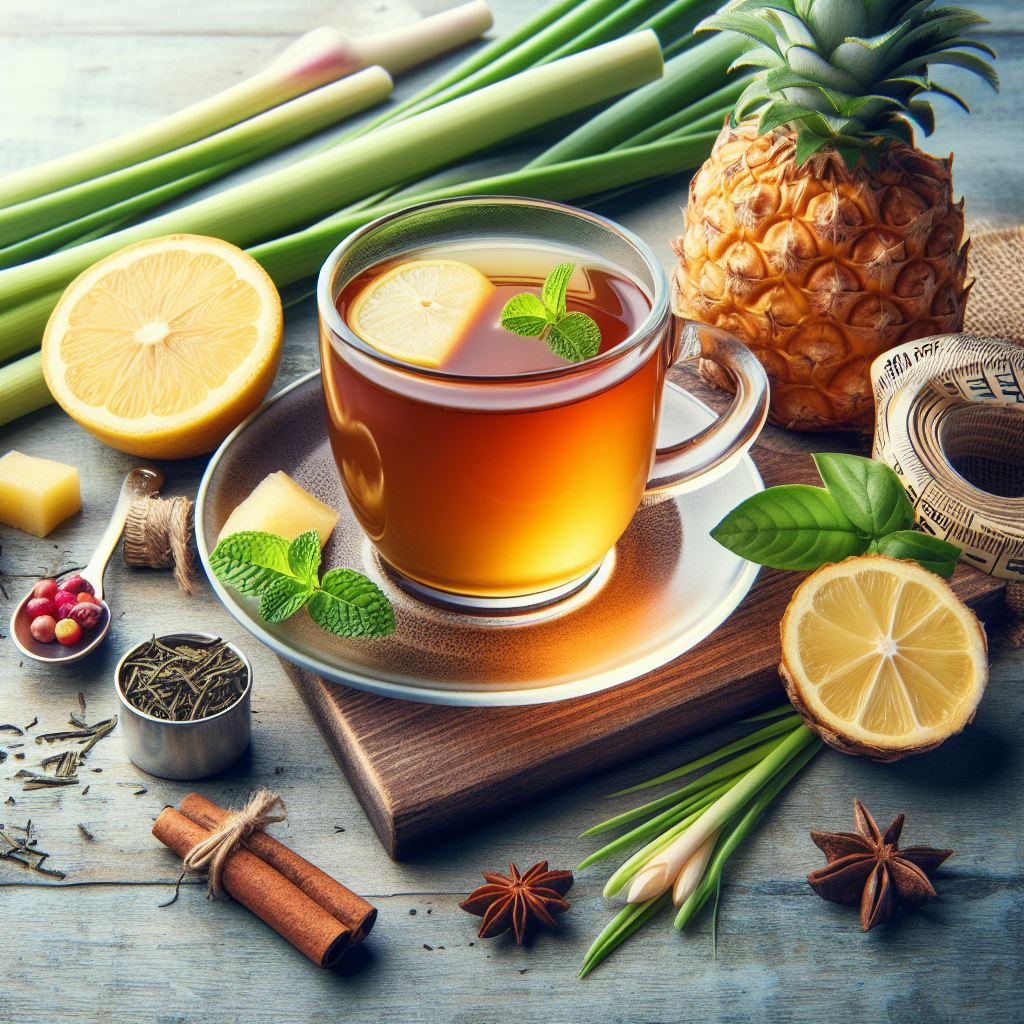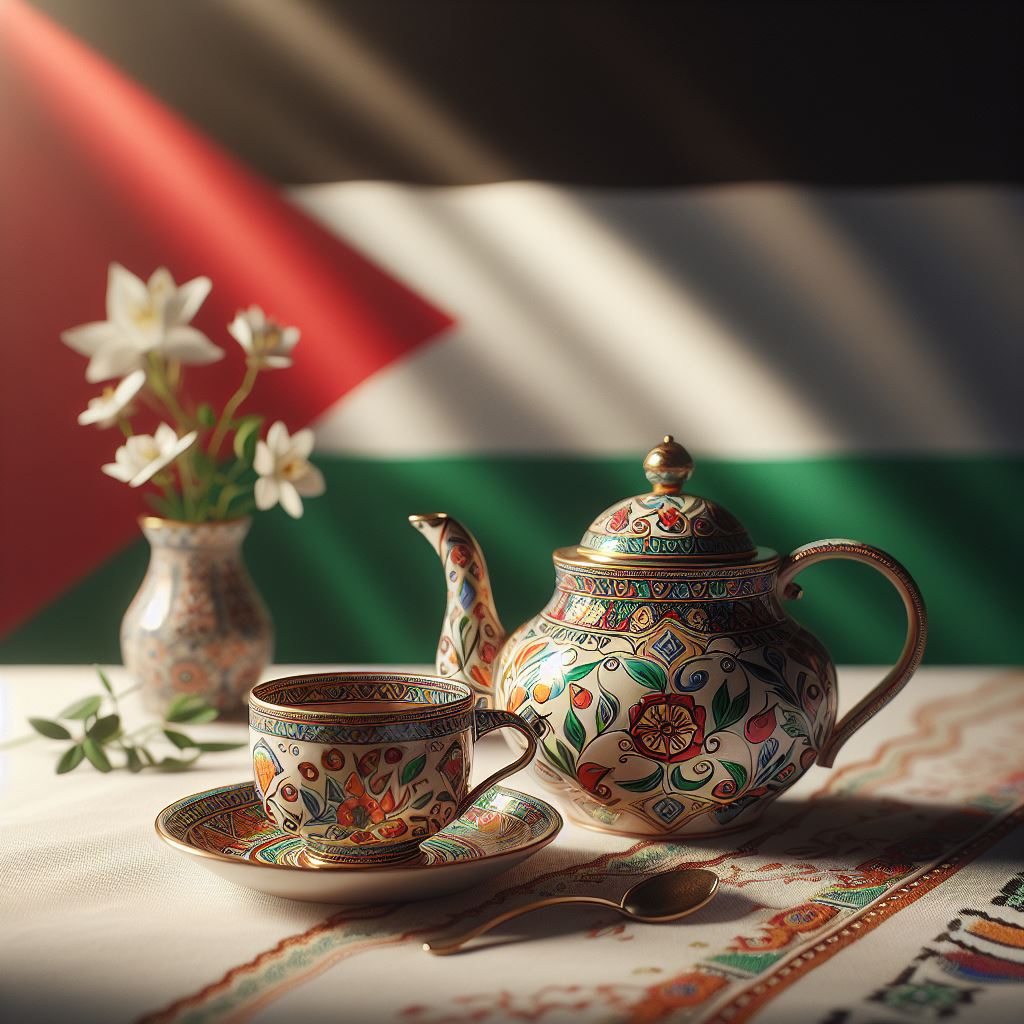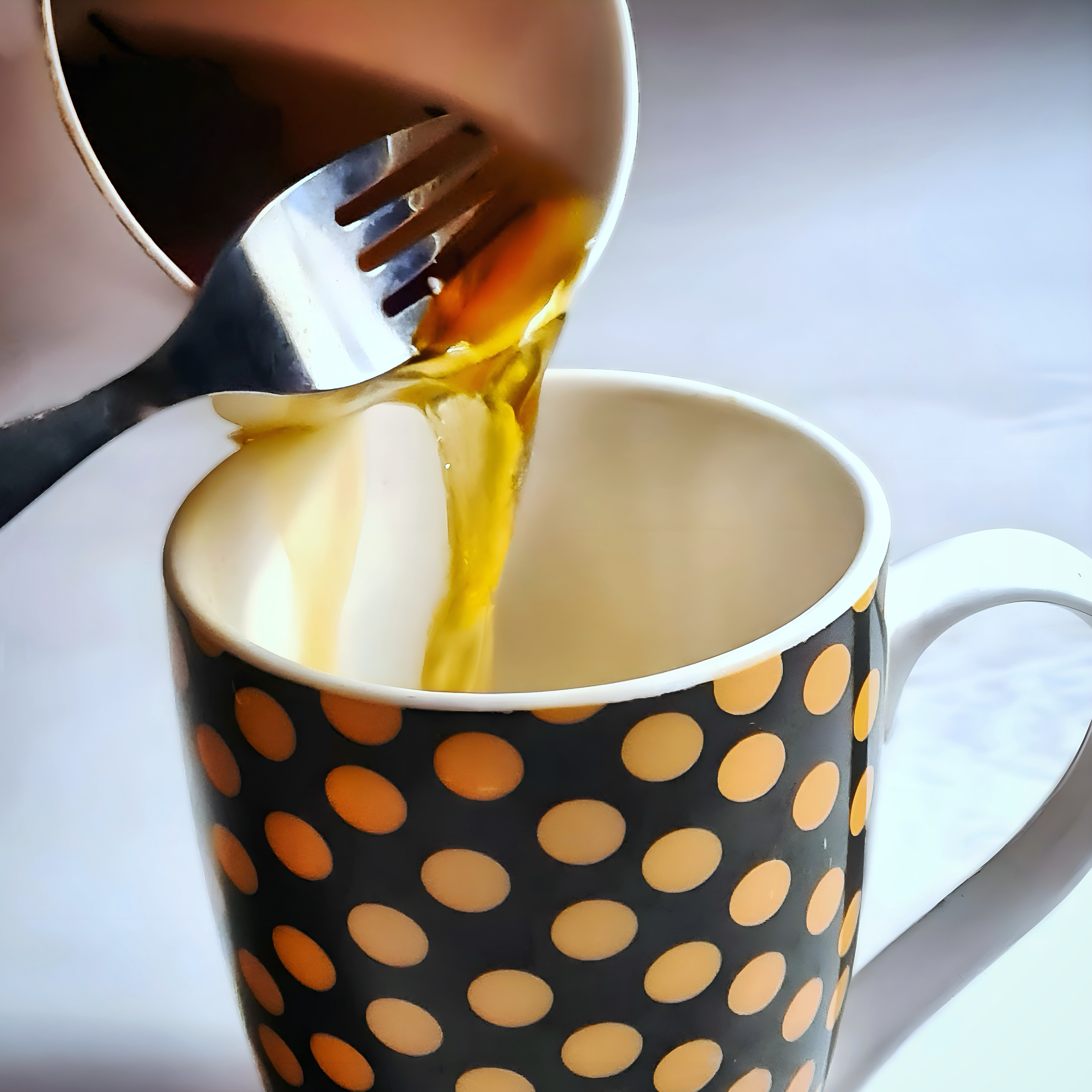Fancy a unique and nutty tea experience? Then we invite you to try ‘walnut tea’ – the traditional tea of Gilgit Baltistan. Baltistan is little known part of the world in northern Pakistan, bordering China, Afghanistan, and India. And If you can look past its natural beauty and into its rich history, you will find one of the most distinctive aspects of Baltistan’s culture; its tea! So join us, and find out how to make this wonderful tea, and more!

Why We Are Nuts About Walnut Tea
As someone who cant get enough of nuts, walnut tea is the perfect option for satisfying my nutty craving. It has a rich nutty, creamy, and slightly sweet flavor, and a rich brown color. Moreover, walnut tea is not only tasty, but also nutritious. Walnuts are a great source of omega-3 fatty acids, antioxidants, and minerals. So if you’re a health ‘nut’, this recipe might be for you!
Walnut tea is usually best served in the morning or evening, as a warm and comforting drink. Especially on a cold Winter/Fall day as a cozy pick-me-up. As for making walnut tea, it is not difficult, but it does require some patience and attention. So throughout this post, we will guide you through the step-by-step process of making traditional walnut tea, as well as some tips and variations to suit your preferences. Let’s get started!
Walnut Tea Ingredients:
To begin making walnut tea, you will need the following ingredients:
- Walnuts (fresh or dried): You will need about 1/4 cup of walnuts for every cup of water. You can use fresh or dried walnuts, but fresh ones are preferred for their flavor and freshness. If you use dried walnuts, make sure they are not rancid or moldy.
- Water: You will need about 4 cups of water for this recipe, which makes about 4 servings of walnut tea. You can adjust the amount of water according to how strong or weak you like your tea. It is important to use clean, preferably filtered water, as the quality of water affects the taste of the tea.
- Sugar or honey (optional): You can add sugar or honey to sweeten your walnut tea, if you like. This is optional, as some people prefer their tea unsweetened. You can add about 1 teaspoon of sugar or honey for every cup of water, or more or less according to your taste. Feel free to use other natural sweeteners too, such as maple syrup, agave nectar, or stevia. Personally, I like maple syrup as it matches the earthy flavour of walnuts.
- Spices (optional): You can add some spices to enhance the flavor and aroma of your walnut tea, if you like. This is also optional though, as some people prefer their tea plain. You can add about 1/4 teaspoon of cinnamon, cardamom, cloves, or any other spice of your choice for every cup of water. You can also use a spice mix, such as chai masala, or a tea bag, such as black tea or green tea, for a more complex flavor.
Equipment:
To make walnut tea, you will need the following kitchen tools and equipment:
- Saucepan: You will need a medium-sized saucepan to boil the water and brew the tea. You can use any type of saucepan, but a stainless steel or enamel one is preferred, as it does not react with the walnuts or the water.
- Strainer: You will need a fine-mesh strainer to strain the tea and remove the walnut pieces and the spices. You can also use a cheesecloth, a coffee filter, or a tea infuser for this purpose. You can also check out our article on How To Strain Tea Without a Strainer: 7 Easy Methods.
- Tea cups: You will need some tea cups to serve the tea. You can use any type of tea cups, but traditional Gilgit Baltistan tea cups are small, round, and made of clay or metal.
- Wooden spoon: You will need a wooden spoon to stir the tea and to crush the walnuts. You can also use a mortar and pestle, a food processor, or a blender for this purpose.
How to Make Walnut Tea: Step-by-Step Instructions
Now that you know what you need, you are ready to make walnut tea. Follow these simple steps below to make a perfect cup of walnut tea:

Step 1: Gathering Fresh Walnuts
The first step in making walnut tea is to gather fresh walnuts. If you have access to a walnut tree, you can pick your own walnuts from the branches or the ground. This is the traditional way of harvesting walnuts in Gilgit Baltistan as they are commonly grown in that region. If not, dont worry. You can also buy fresh walnuts from a local market or a grocery store!
• When to Harvest Walnuts?
The best time to harvest walnuts is in the autumn, when they are ripe and ready to fall. You can tell if a walnut is ripe by looking at its color and texture. A ripe walnut has a green or brown husk that is soft and easy to peel. A unripe walnut has a hard and thick husk that is difficult to remove. You can also shake a walnut and listen to the sound it makes. A ripe walnut makes a rattling sound, while an unripe walnut makes a dull sound.
Step 2: Cleaning and Shelling
Once you’ve gathered the walnuts, you must clean and shell them. This step is important to ensure the freshness and the flavor of the walnut tea. You can also skip this step if you use dried walnuts, but fresh ones are recommended for a better taste.
To clean and shell the walnuts, you will need a nutcracker, a bowl, and a wooden spoon. Here’s how to do it:
- Crack the shells of the walnuts with a nutcracker. Be careful not to crush the kernels of the nuts. You can also use a hammer, a stone, or a plier for this purpose.
- Remove the kernels from the shells. Discard the shells and keep the kernels. You can also save the shells for later use, such as for composting or for making crafts.
- Rinse the kernels with water to remove any dirt or debris. Drain and dry the kernels with a cloth or a paper towel.
- Crush the kernels with a wooden spoon. You can also use a mortar and pestle, a food processor, or a blender for this purpose. You don’t need to grind the kernels into a fine powder, just break them into small pieces.

Step 3: Boiling Water
This next step is easy! All you need to do is boil some water. However, it’s important to do it correctly in order to extract the optimal flavor and the nutrients of the walnuts. Here’s how to boil the water:
- Fill a measuring cup with water. You will need about 1 cup of water for every 1/4 cup of walnuts. You can adjust the amount of water according to how strong or weak you like your tea.
- Pour the water into a saucepan. Place the saucepan on the stove and turn on the heat to high.
- Bring the water to a boil. You can tell if the water is boiling by looking at the bubbles and the steam. A rolling boil is when the water is bubbling vigorously and continuously. A gentle boil is when the water is bubbling moderately and occasionally.
- Reduce the heat to low. You want to maintain a gentle boil, not a rolling boil, for the next step.
Step 4: Infusing Flavors (optional)
This step is optional, but we advise it as it can enhance the taste and the smell of the tea. It basically involved adding some sugar or honey and some spices to the boiling water to infuse some sweetness and some warmth to the walnut tea. Here is what we used to infuse some flavors:
- Add some sugar or honey to the boiling water. You can add about 1 teaspoon of sugar or honey for every cup of water, or more or less according to your taste. You can also use other natural sweeteners instead, such as maple syrup, agave nectar, or stevia.
- Stir the water with a wooden spoon to dissolve the sugar or honey. You can also taste the water and adjust the sweetness as needed.
- Add some spices to the boiling water. You can add about 1/4 teaspoon of cinnamon, cardamom, cloves, or any other spice of your choice for every cup of water. You can also use a spice mix, such as chai masala, or a tea bag, such as black tea or green tea, for a more complex flavor.
- Stir the water with a spoon to infuse the spices. You can also taste the water and adjust the flavor as needed.
- Let the water boil for about 5 minutes, or until the water is fragrant and flavorful. You can also cover the saucepan with a lid to retain the heat and the aroma. Do not let the water boil over or evaporate too much, as this will affect the taste and the quantity of the tea.

Step 5: Brewing the Walnuts, Spices, and Sweetener Together
The fifth step in making walnut tea is the most important. This step is crucial to extract the essence and the flavor of the walnuts. You will need to add the crushed walnuts to the boiling water and let them simmer for some time.
Using the crushed walnuts from before, here is how to brew the tea:
- Add the crushed walnuts to the boiling water. You can add about 1/4 cup of walnuts for every cup of water, or more or less according to your taste. You can also adjust the amount of water according to how strong or weak you like your tea.
- Stir the water with a wooden spoon to mix the walnuts well. You can also taste the water and adjust the flavor as needed.
- Let the water simmer on low heat for about 15 to 20 minutes, or until the water turns brown and the walnuts soften. You can also cover the saucepan with a lid to speed up the process and retain the heat. Do not let the water boil over or evaporate too much, as this will affect the taste and the quantity of the tea.
- Turn off the heat and remove the saucepan from the stove. Your walnut tea is ready to be strained and served.
Step 6: Straining and Serving the Tea
The final step in making walnut tea is to strain and serve the tea. Whether thats in the traditional Gilgit Baltistan style cup, or in any way you prefer. Here’s what you need to do:
- Strain the tea through a fine-mesh strainer into a teapot or a pitcher. You can also use a cheesecloth, a coffee filter, or a tea infuser for this purpose. Discard the walnut pieces and the spices, or save them for later use, such as composting.
- Pour the tea into some tea cups. You can use any type of tea cups, but traditional Gilgit Baltistan tea cups are small, round, and made of clay or metal.
- Enjoy your walnut tea with some local accompaniments or snacks. Some of the common ones in Gilgit Baltistan are:
- Bread: You can have your walnut tea with some bread, such as chapati, roti, naan, or paratha.
- Dried fruits and nuts: You can have your walnut tea with some dried fruits and nuts, such as apricots, raisins, almonds, pistachios, or cashews. These are rich in energy, vitamins, and minerals, and add some sweetness and crunch to the tea.
- Cookies and cakes: You can have your walnut tea with some cookies and cakes, such as nan khatai, baklava, or walnut cake.

Tips and Variations
Now you’ve learnt the basics of making your very own walnut tea, you can try experimenting and giving it a personal touch! Here are just a few additional tips and variations that you could try:
- To store fresh walnuts, keep them in a cool, dry, and dark place, such as a refrigerator or a freezer. They can last for several months or even years, if stored properly.
- To make walnut tea more creamy and frothy, you can blend the tea with a hand blender or a whisk before serving. You can also make it even creamier by adding some milk or cream to the tea, if you like.
- To make walnut tea more refreshing and tangy, you can add some lemon or lime juice or lemon zest to the tea. You can also serve the tea chilled or over ice, if you prefer.
- To make walnut tea more exotic and adventurous, you can try some other ingredients, such as rose water, saffron, ginger, or mint, to the tea. You could also go wild and experiment with different types of nuts, such as almonds, pistachios, or cashews, to the tea.
Check out this video to see one of the locals make their very own authentic walnut tea:
Cultural Significance of Walnut Tea in Gilgit Baltistan
Walnut tea is one of the most popular and cherished teas in Gilgit Baltistan, as walnuts are commonly grown throughout the region due to perfect land and weather conditions. It represents the heritage, the diversity, and the hospitality of the region. And interestingly, this special tea reflects the influence of various civilizations that have passed through the region, such as the Persians, Tibetans, Mongols, and British. So here are some of the cultural aspects of walnut tea you may not know:
• History:
Walnut tea has a long and rich history in Gilgit Baltistan. It is believed that walnuts were introduced to the region by the Persians, who ruled the area in the ancient times. Walnuts were considered a luxury and a delicacy, and were used for various purposes, such as food, medicine, oil, and dye. It was regarded as a special drink that was reserved for the royalty, the nobility, and the guests.
• Tradition:
Walnut tea is a traditional drink that is passed down from generation to generation in Gilgit Baltistan. It is a part of the daily life and the social life of the people. Additionally, is usually prepared and served by the women of the house, who take pride and joy in making the best walnut tea for their family and friends. It is also a way of expressing love, respect, and gratitude to the guests, who are treated as family members.
Conclusion
Walnut tea is a unique and delicious tea that originates from Gilgit Baltistan, a region in northern Pakistan. It has a nutty, creamy, and slightly sweet flavor, and a rich brown color to match the nuts. Making walnut tea is not difficult, but it does require a little patience and attention. Although, it doesn’t take long to get the hang of it!
We hope you enjoyed our take on the traditional tea of Giligit Baltistan and easily understood the step-by-step process of making walnut tea. Do let us know if you like it, or if you have manage to improve our walnut tea recipe! If not, hopefully you have learned something new and interesting about this nutty tea, and that you will try it and appreciate the cultural heritage it represents.
Discover More Tea Recipes
- How to Make Blood Orange Iced Tea: A Citrus Burst
- Korean Honey Ginger Tea: How to Make ‘Saenggang Cha’
- How to Make a Tiramisu Smoothie
- How to Make Beetroot Tea: A Healthy Herbal Brew
- Earl Grey Lemonade – A Simple and Zesty Iced Tea
Sources:
- From the Wild to the Cup: Tracking Footprints of the Tea Species in Time and Space
- Intercropping Walnut and Tea: Effects on Soil Nutrients, Microbial Community, and Crop Yield
- Walnuts 101: Nutrition Facts and Health Benefits (healthline.com)
- Walnut tea (baltistan traditional recipe) Recipe by Kanwaljeet Chhabra – Cookpad





Leave a Comment